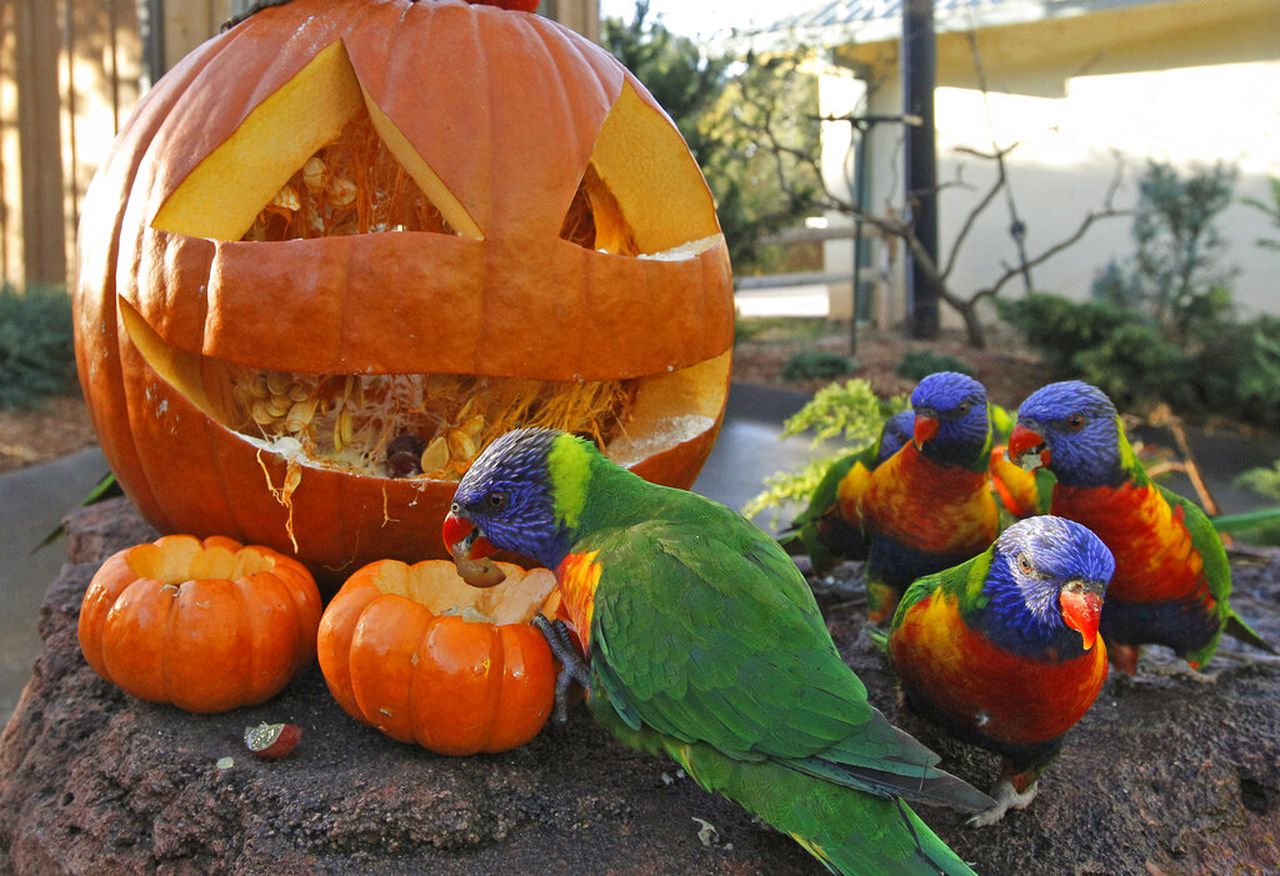How to keep Halloween pumpkins from turning into environmental nightmares
American farmers grow around 1.5 billion pounds worth of pumpkins every year. Very few are used for culinary purposes. Instead, we carve them into all kinds of shapes, faces, and scenes. Then, like an overnight trick, the pumpkins resemble the infamous mugshot of a disheveled Gary Busey, and most end up in the trash as soon as they turn bad or when Pumpkin Destruction Day comes the second Saturday in November.
In fact, 1.3 billion pounds of pumpkins grown end up in landfills, according to the U.S. Green Chamber of Commerce, a California-based national networking organization that emphasizes green and sustainable business practices.
Before it even gets to your home, each pumpkin requires 16 gallons of water to grow. Then, they need to be transported to different parts of the country. Almost half of all pumpkins are grown in Illinois, which produces 634 million pounds, more than the next five most productive states combined, according to the USDA.
Once you throw them out, they rot and produce methane, which, over 20 years, is around 80 times more harmful than CO2. Methane is one of the gasses that prevent the heat produced on Earth from escaping into the atmosphere and space and is a major contributor to global warming.
Around 17% of all methane produced in the U.S. comes from landfills.
Anyway, you get that point. It’s not great. But some clever alternatives are much better for the environment and ensure that your pumpkin can give back rather than just be an environmental net loss.
Composting: Decomposing pumpkins can enrich your garden’s soil. This reduces the need for chemical fertilizers, helps to cut down on landfill waste, and doesn’t produce nearly as much methane. The reason this works differently from a landfill is vegetation in a landfill isn’t exposed to enough oxygen, so the microorganisms that break them down in a different way and produce carbon dioxide instead.
Animal and Insect Feed: Old pumpkins can be a nutritious treat for farm animals, pets, wildlife, and insects. This is an eco-friendly use of food waste and supports local ecosystems. Even exotic parrots will eat pumpkins.
Food: You might not know by looking at them, but pumpkins are more versatile than you think. The flesh of good pumpkins can be pureed for soups, pies, or other baked goods. This helps minimize food waste and saves money. Even the seeds can be turned into a quick and healthy snack. Just dry and roast them.
Here are 50 recipes you can choose from.
Pumpkin Planters: Hollow out old pumpkins and use them as natural planters for small flowers or herbs. As the pumpkin decomposes, it provides nutrients to the plants.
Pumpkin Crafts: Use the outer shells for creative crafts or decorations. This gives pumpkins a second life and reduces the need for buying new decor items.
Donate to farms and zoos: Some zoos accept old pumpkins as they can be used as animal enrichment. This is an alternative to sending them to landfills and supports animal welfare. But you can also think about local chicken, pig, and cow farms. Your neighbor may have some chickens who could do with a nutritious meal.
Pumpkin Facial Mask: Pumpkin is rich in vitamins A and C. Making a DIY facial mask can be a way to utilize its beneficial properties and avoid wasting it.
Bird Feeder: Cut a pumpkin in half and fill it with bird seeds. This creates a natural bird feeder and contributes to supporting local wildlife.
Biodegradable Lanterns: Use carved pumpkins as natural lanterns with candles inside for a few more days. Once they start to decompose, they can be composted.
This may not be feasible for us sitting at home, but there are ways to turn pumpkins into fuel that reduce our dependence on fossil fuels.
Anaerobic Digestion:
In this process, pumpkins and other organic waste are broken down by microorganisms in the absence of oxygen. This produces biogas, which is primarily composed of methane and carbon dioxide. The biogas can be captured and used as a fuel for heating or generating electricity.
Ethanol Production:
Pumpkins can be used to produce ethanol, a type of biofuel. The sugars in pumpkins are fermented by yeast to produce ethanol and carbon dioxide. This ethanol can be used as a fuel additive to gasoline, reducing the dependence on fossil fuels.
Biomass Conversion:
Pumpkins can be dried and used as biomass feedstock. When burned or gasified, the biomass releases heat, which can be used to produce steam and generate electricity.
Biodiesel Production:
Although not as common, oils from pumpkin seeds can potentially be converted into biodiesel. This biodiesel can be used in diesel engines, offering a renewable alternative to conventional diesel fuel.
